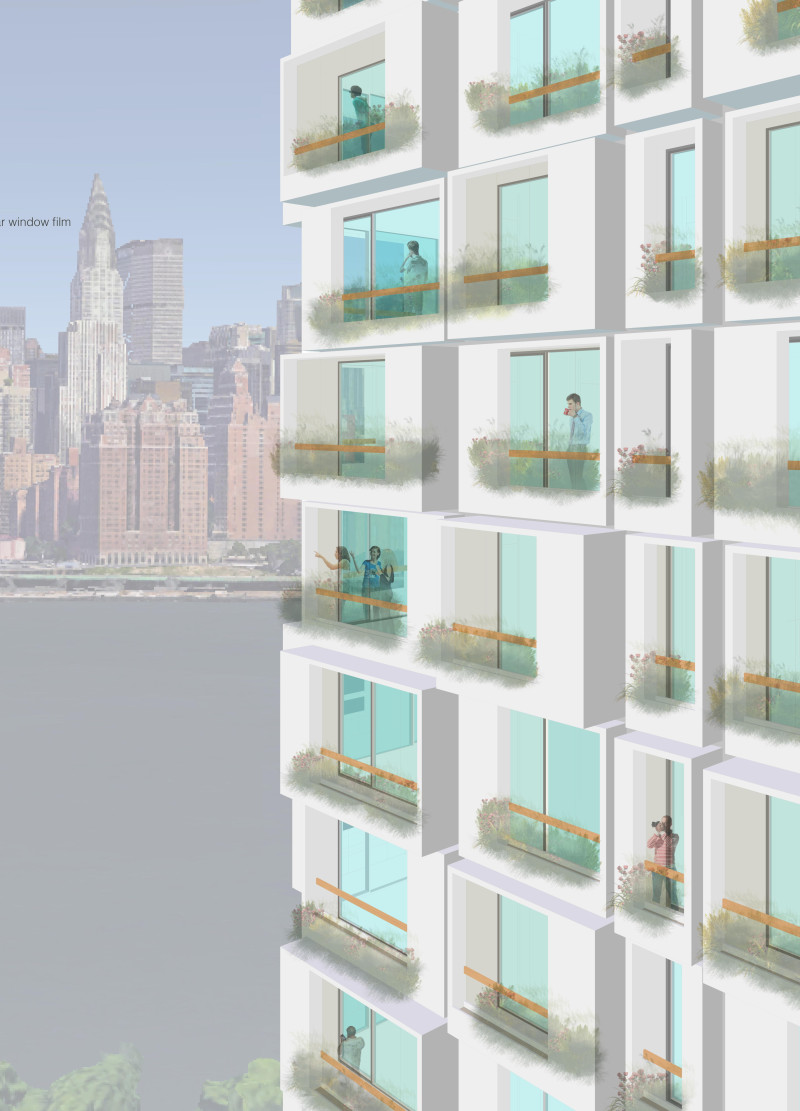5 key facts about this project
The design focuses on the changing needs of households in New York City, looking to bridge the gap between the available sizes of apartments and the diverse requirements of modern living. It adopts a concept built around a movable wall system called the Trick-Track system. This system allows for the flexible arrangement of interior spaces, making it possible for layouts to be adjusted based on the needs of residents.
Transformable Panels
Transformable panels form the core of this approach. They create different room configurations to meet individual preferences and requirements. Allocations suggest that 7% of units will be studios, while one-bedrooms will make up 34%, two-bedrooms 33%, and apartments with three or more bedrooms 26%. This mix allows for a variety of living spaces that can adapt over time, appealing to the diversity of urban residents.
Spatial Integration
The design smartly integrates essential areas, including kitchens, common sections, entrances, utilities, and bathrooms. The positioning of these panels in key locations enhances the use of space by allowing residents to flow between private and shared areas easily. This layout maximizes comfort and accessibility, enabling a sense of ease in daily life while addressing the functional needs of urban dwellers.
Structural Considerations
Safety and comfort are key factors in the design. The project meets current standards for fire and sound insulation, ensuring that living spaces are secure and pleasant. By prioritizing these elements, the design not only focuses on aesthetics but also on adhering to important building regulations. This commitment to safety supports the overall goal of providing a reliable living environment that focuses on the individual needs of residents.
Attention to detail is evident throughout the design. The use of isolated frame construction around the movable panels significantly improves acoustics while maintaining the overall integrity of the living spaces. This thoughtful element enhances the effectiveness of the design, allowing for an efficient balance of privacy and community interaction.


























